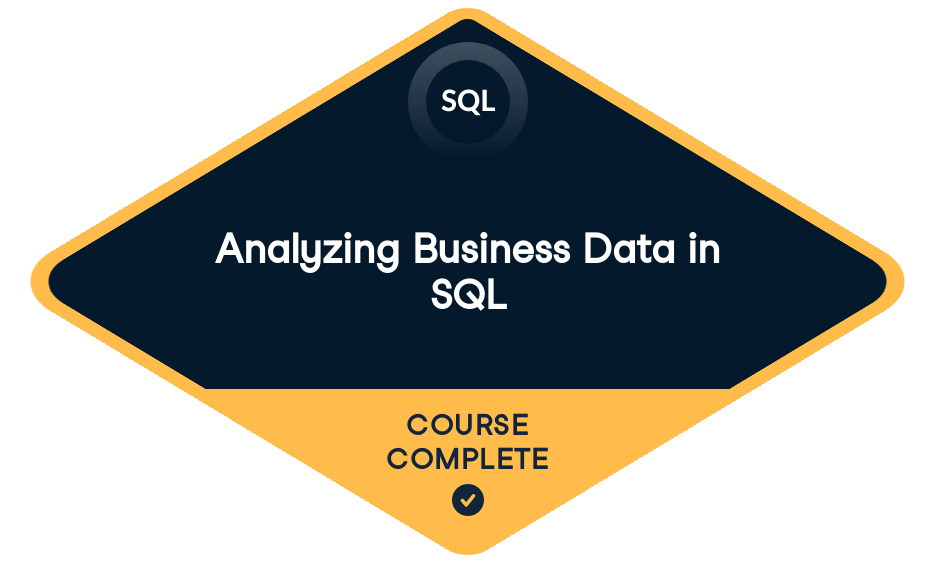
Loved by learners at thousands of companies
Course Description
Businesses track data on everything, from operations to marketing to HR. Leveraging this data enables businesses to better understand themselves and their customers, leading to higher profits and better performance. In this course, you’ll learn about the key metrics that businesses use to measure performance. You'll write SQL queries to calculate these metrics and produce report-ready results. Throughout the course, you'll study data from a fictional food delivery startup, modeled on data from real companies.
Training 2 or more people?
Get your team access to the full DataCamp platform, including all the features.- 1
Revenue, Cost, and Profit
FreeProfit is one of the first things people use to assess a company's success. In this chapter, you'll learn how to calculate revenue and cost, and then combine the two calculations using Common Table Expressions to calculate profit.
- 2
User-Centric KPIs
Financial KPIs like profit are important, but they don't speak to user activity and engagement. In this chapter, you'll learn how to calculate the registrations and active users KPIs, and use window functions to calculate the user growth and retention rates.
Registrations and active users50 xpRegistrations by month100 xpMonthly active users (MAU)100 xpWindow functions50 xpRegistrations running total100 xpMAU monitor (I)100 xpGrowth50 xpMAU monitor (II)100 xpMAU monitor (III)100 xpOrder growth rate100 xpRetention50 xpNew, retained, and resurrected users50 xpRetention rate100 xp - 3
ARPU, Histograms, and Percentiles
Since a KPI is a single number, it can't describe how data is distributed. In this chapter, you'll learn about unit economics, histograms, bucketing, and percentiles, which you can use to spot the variance in user behaviors.
Unit economics50 xpAverage revenue per user100 xpARPU per week100 xpAverage orders per user100 xpHistograms50 xpHistogram of revenue100 xpHistogram of orders100 xpBucketing50 xpBucketing users by revenue100 xpBucketing users by orders100 xpPercentiles50 xpRevenue quartiles100 xpInterquartile range100 xp - 4
Generating an Executive Report
Executives often use the KPIs you've calculated in the three previous chapters to guide business decisions. In this chapter, you'll package the KPIs you've created into a readable report you can present to managers and executives.
Training 2 or more people?
Get your team access to the full DataCamp platform, including all the features.Data Scientist
Michel is a data scientist who's worked at leading Middle-Eastern startups like Bookwitty (e-commerce) and Anghami (music streaming). He loves using open-source technologies like Python, R, and SQL to analyze data, optimize KPIs, and solve problems.
Join over 18 million learners and start Analyzing Business Data in SQL today!
Create Your Free Account
or
By continuing, you accept our Terms of Use, our Privacy Policy and that your data is stored in the USA.
